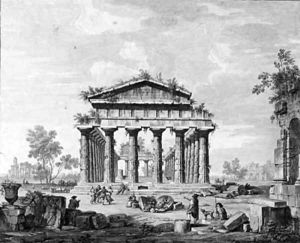Luigi Balugani Paintings
Luigi Balugani, an Italian draftsman and painter, was born in 1737 in Modena, Italy. Despite his relatively short life, he made significant contributions to the world of art, particularly through his association with the French explorer Constantin-François de Chassebœuf, comte de Volney, and more notably with the Italian-born French naturalist and explorer, Philibert Commerson. Commerson was part of Louis Antoine de Bougainville's global circumnavigation expedition, which commenced in 1766, and Balugani was enlisted as Commerson's assistant and draftsman for this journey, marking a pivotal moment in his career and the history of botanical and geographical illustration.
Throughout the expedition, which lasted several years and took him away from Europe, Balugani meticulously documented flora, fauna, landscapes, and scenes of local life in places as diverse as Brazil, Argentina, the Strait of Magellan, Tahiti, the islands of the Indo-Pacific, and Madagascar. His drawings are particularly valued for their precision and beauty, contributing significantly to European knowledge of distant lands and cultures during the 18th century.
Tragically, Luigi Balugani's promising career was cut short when he died in Madagascar in 1770, at the young age of 33. Despite his early death, the legacy of his work lived on through the specimens and illustrations that were sent back to Europe. These materials were crucial for scientific studies and were often incorporated into the works of other naturalists and explorers of the era. Balugani's contributions, though not widely known to the general public, remain of great importance to historians of science and art, illustrating the crucial role of art in the service of exploration and scientific discovery. His works, preserved in various collections, continue to be studied for their artistic merit as well as their historical significance in documenting the natural world and cultures during the period of European exploration.
